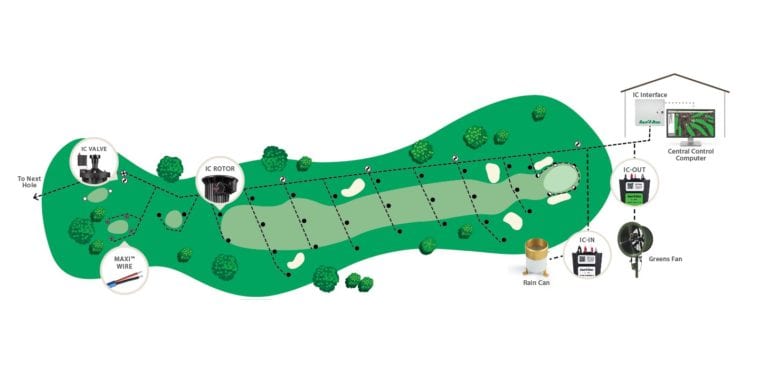Before I share with you the latest innovation of Rain Bird, I would like to draw your attention to some interesting technology trends.
One of these trends is the rise of usage of artificial intelligence that will stay with us for sure and can be helpful to increase water efficiency.
The usage of Machine Learning as a Service (MLaaS = it refers to a range of services which offer machine learning tools as a part of cloud computing services, these tools include data visualization, APIs, face recognition, natural language processing, predictive analytics and deep learning.) could be used for predictive maintenance as well.
According to Stratistics MRC, the Global Machine Learning as a Service (MLaaS) market is expected to grow from $ 679.32 million in 2016 to reach $ 7620.18 million by 2023 with a CAGR of 41.2%. The growth of MLaaS can be explained by the increasing rate of adoption for IoT and automation systems.
Some companies are offering machine learning solutions on a subscription-based model. Currently, the biggest challenge for many companies is the lack of skilled personnel.
By the way, both Google Home and Amazon Alexa are using artificial intelligence and machine learning technologies.
Rain Bird IC CONNECT products
I cannot remember what was the water consumption of American golf courses in 2017, but I assume it must be less than in 2013 when it was cca. 1.859 million acre-feet.
Rain Bird Golf has recently introduced two IC CONNECT™ products designed to make its industry-leading IC System even more functional and convenient for superintendents and their courses.
The Rain Bird IC-IN Integrated Control Sensor Input Device makes it possible to monitor and respond to on-site sensor information in real-time, utilizing the IC System’s MAXI™ wire path.
Scott Rottler, Senior Product Manager for Rain Bird Golf’s Central Control systems said: “As complementary devices, both the IC-IN and IC-OUT take the IC System to the next level by providing superintendents with additional functionality that can reduce water use, save time and reduce labor expenses.”

Both the IC-IN and IC-OUT connect directly to the same IC System wire path as the Integrated Control Modules (IC Modules) used to activate sprinklers. Multiple IC-IN, IC-OUT and IC Modules may be connected to a single wire path, providing flexibility for the varied site conditions found across every golf course.
IC-IN collects and transmits data to the Central Control from sensor devices of various types, including flow, rain, pressure, temperature, wind speed, on/off and reservoir level sensors.
IC-OUT integrates the Rain Bird Central Control with remotely located products such as pumps, fans, gates, fountains, lights, motorized valves, DC latching solenoids and more.
Users can now control these products automatically from the Central Control computer or manually via the Rain Bird Mobile Interface (MI Series™) application.
Constant communication between the Central Control and the IC-IN and IC-OUT devices facilitates real-time, automated responses to changing site conditions.
I think the implementation of artificial intelligence and machine learning in the future will be a game changer not just in terms of golf course operations, but also in human resource management. This is not only true for Rain Bird, but for other irrigation system manufacturers as well.
